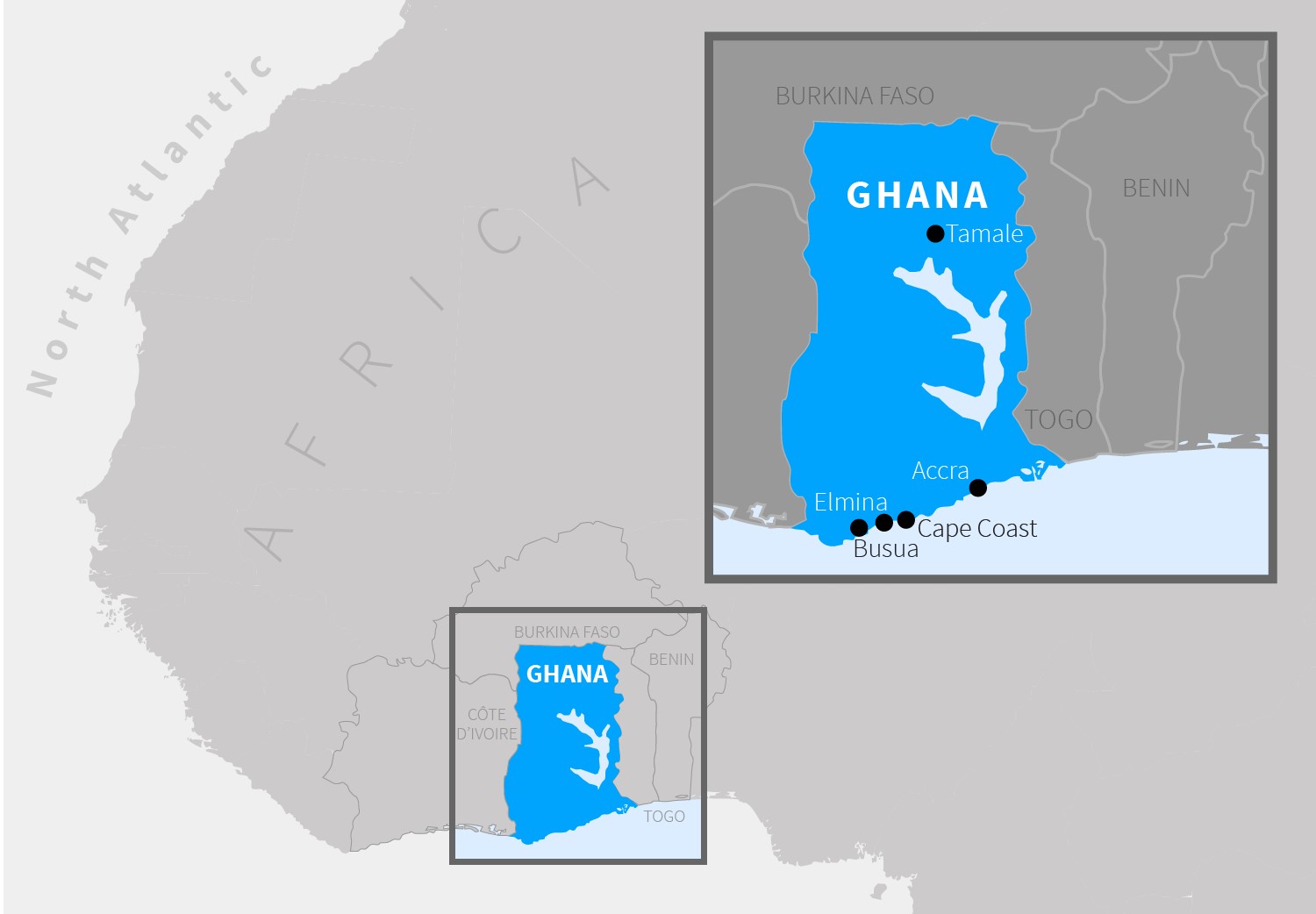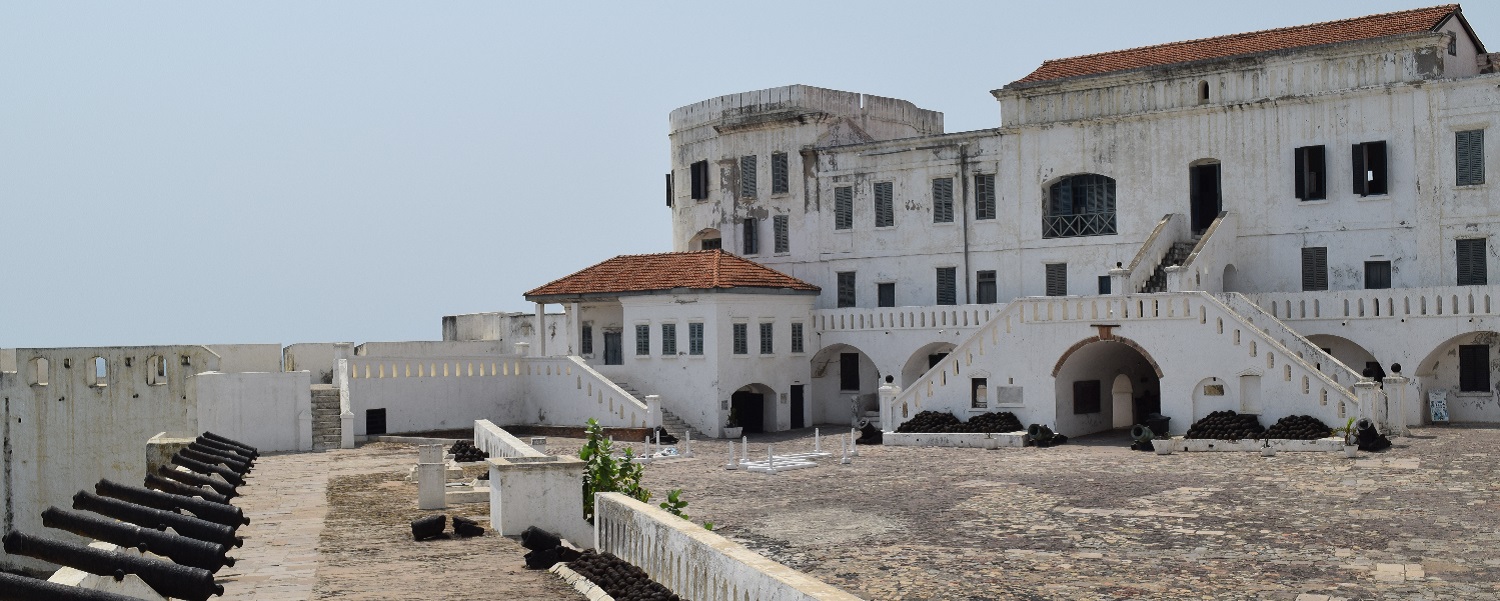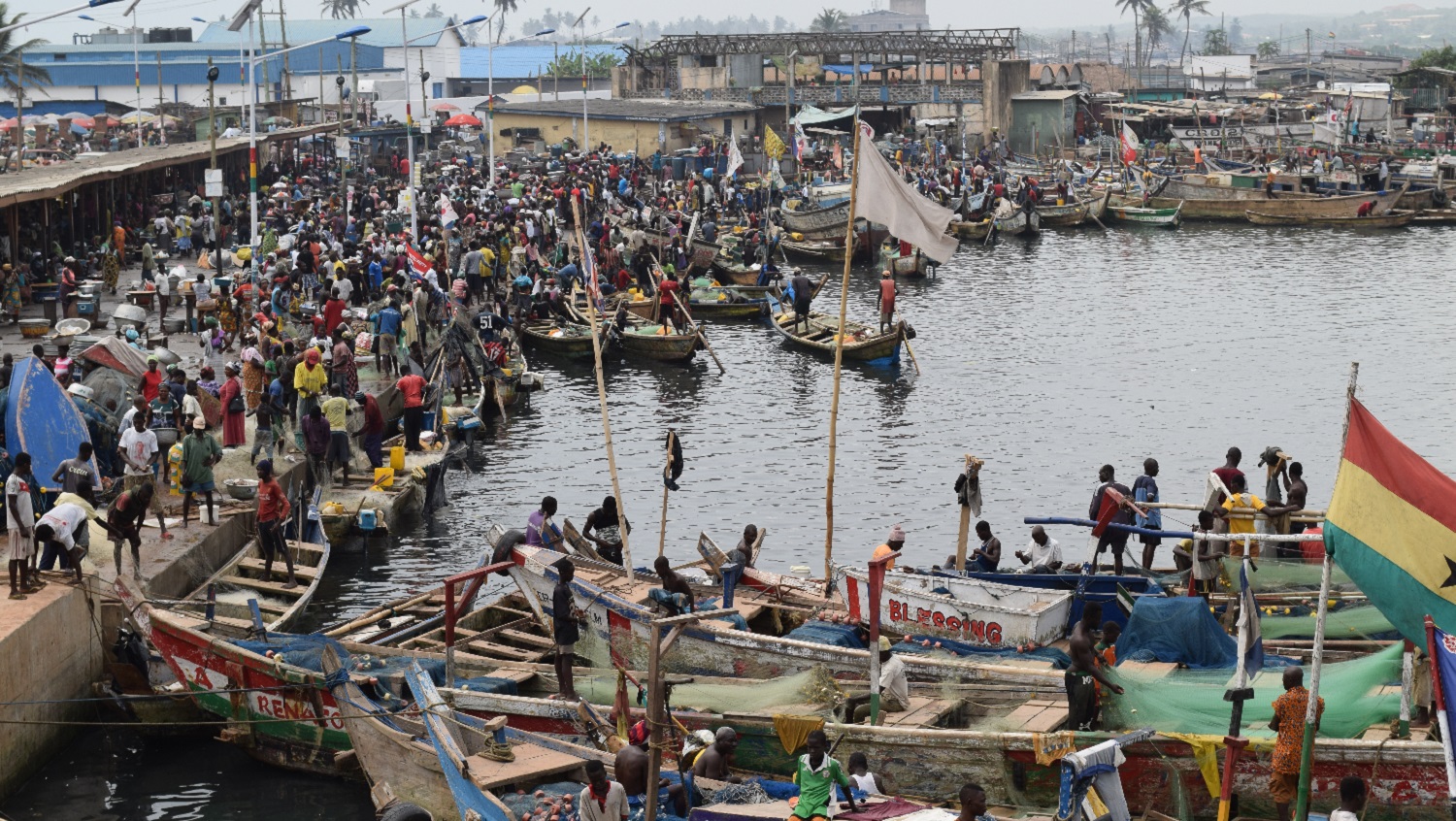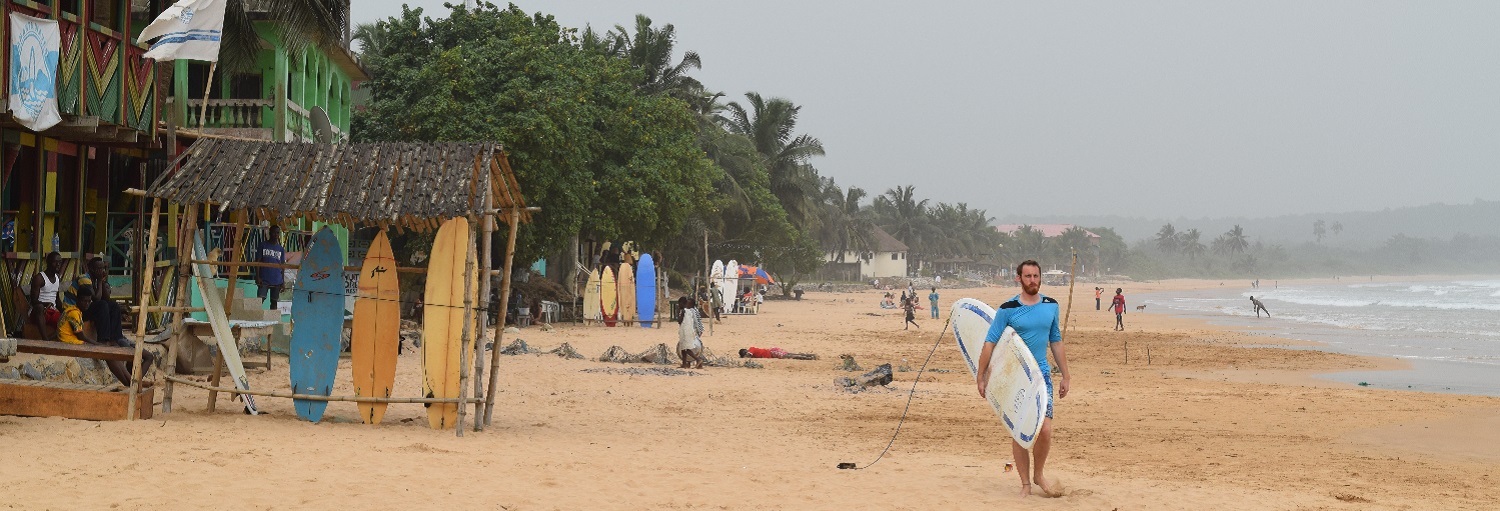Reviews
Once the centre of the slave trade, Ghana is now a peaceful democracy with deserted beaches

Although plenty of expats fill the planes to visit their relatives, very few complete foreigners come to Ghana as tourists. The reputation of West Africa for conflict, poverty and disease may be the principal barrier. Yet Ghana has long been the breakout star of the region: a beacon of peaceful and stable democracy for the past 25 years. It is a poor country, though recently it has been developing more rapidly, and with sensible precautions you are unlikely to fall prey to any tropical diseases.
Ghana may not be a tourist hotspot, but it does have a lot to attract the adventure traveller. It has an important history: this was the centre of the slave trade until 200 years ago, with a coastline of colonial castles that were converted into slave prisons that are now respectful memorials of this blight on humanity. It also has a well-developed infrastructure and the kind of picture postcard white sand beaches that people pay thousands of dollars to access in the Caribbean at this time of year.
The influence of Britain and the expats is considerable: English is universally spoken, fast food is commonly eaten, and 3-pin 13-amp sockets are standard. Ghana wears its Africaness lightly too: for instance, you see fewer tribal masks and sculptures adorning hotels and restaurants than in most of the sub-Sahara. So it is an easy location for travellers interested in exploring some of West Africa’s history and beaches in relative safety and comfort (it also shares a time zone with Greenwich).

When you arrive at Kotoka international airport just to the north of the capital Accra (daily there are seven-hour direct flights from Heathrow), you will not only need to show your visa (available from the modern embassy in Highgate) but also your yellow fever certificate (bring too your deet spray and malaria tablets).
Accra
We could see clearly from the plane that Accra’s two million people are spread over a wide area of mostly single-storey buildings, criss-crossed by decent roads ferrying lots of cars, but spotted at night with only occasional yellow street lamps here and there.
It is just 15 minutes by taxi south and east to the beach at Labadi. Here the wealthy hang out at La Palm Royal Beach Hotel and the wealthier at Labadi Beach Hotel. Both have relaxing pools, swim-up bars to enjoy a local Club beer, and sun-loungers set among landscaped palm trees, but with security barring the path to the beach behind.

There are several kilometres of fine if grubby sand, and we paid the necessary 4 Ghanaian cedis, US$1, to walk across the 200 metre strip of public beach between the two hotels. This is a hive of activity with horses trotting and quad bikes zooming about in front of the dozen or so restaurants where umbrellas, tables and chairs line the widest section of the beach; all convert into bars and nightclubs as the sun goes down. However, if you are not staying at one of the hotels, there are no facilities for sunbathing.
Just five minutes down the road is the Artists Alliance Gallery, established ten years ago by the widely acknowledged godfather of Ghana’s internationally acclaimed modern art scene, Ablade Glover, now 82. Spread over three floors with a terrace overlooking the beach, the ground floor is devoted to a fine collection of antique wooden carvings, the top to local up-and-coming artists, and the middle to Glover’s own work. His large canvasses, with richly textured oils applied thickly with a palette knife, start at around US$3k. He happily signed catalogues from his London exhibitions and posed for photographs in front of the painting we bought.
Onward west is the Osu district, where there are some very cool interior design stores, juice stands and evening hangouts. And here you will find La Villa boutique hotel, in the old Soviet Embassy. Although there is a Mövenpick and a Kempinski, this is the most chic place to stay, with forty rooms decked out in locally made furniture, fabrics and art. It is also a good base to see the main sites, which are a little further west along the coast road.

Black Star Square is a massive, empty concrete plaza with three enormous spectator stands on either side where people gather now and then to hear their political leaders speak. Just opposite is Independence Arch, in the middle of a roundabout.

Kwame Nkrumah Park, with fountains and bronze statues, holds the tasteful mausoleum of the man who not only led the country to statehood in 1957 (what was then called the Gold Coast had been a British colony since 1901) but also became the first president of any independent African country (born as Ghana), fanning the winds of change throughout the whole continent.

After a period of dictatorships and coups, since 1992 there have been several democratic and peaceful changes of power. (This national stability was affirmed with the appointment of Kofi Anan, a prominent Ghanain, as Secretary-General of the United Nations in 1996.) As recently as two weeks before we arrived, on 7 December 2016, the incumbent president, John Dramani Mahama of the National Democratic Congress, lost an election after four years in power to Nana Akuffo-Addo of the New Patriotic Party. We saw campaign posters for the candidates everywhere, along with those exhorting people to use their vote peacefully. While we were there, the country felt calm during the transition and it was fully expected that Akuffo-Addo would be sworn in without bother on 7 January 2017, which he then was. (Compare this to the awful events unfolding in The Gambia, round the coast, at the same time.)
This political strength was underpinned in 2007 when oil was discovered off the coast, boosting GDP growth rates as high as 15% within a few years, though from a low base. However, more recently questions have been asked about whether the oil revenues have been well used, as over-expansion has increased the fiscal deficit and triggered higher inflation, which is a prime reason the voters changed their government. That said, Ghana is still an economic success story not just of the region but also of the continent.
Yet severe inequality is visible to the most casual tourist. Further west from cool Osu is wretched Jamestown. The British castle turned slave prison is still here, near the lighthouse, overlooking the terrible poverty of a community of fishermen. When your taxi pulls up you will easily find a local to act as your guide to take you safely through the labyrinth of tiny wooden huts that serve as houses and shops, school and market.

Accra’s main market is at Makola and is vast, with parades of people carrying enormous bundles on their heads, ducking and diving between packed stalls sheltered from the heat under parasols. We were the only white people we saw among the tens of thousands there that day and we had no hassle of any kind. Ablade Glover’s painting we bought captures perfectly the vibrant energy and raging colour if not the noise and smells of the place.

The other main sites include the modernist construction of the National Theatre, though it is rarely used, and the controversial but elegant Flagstaff House, the residence and office of the president.
Accra feels like a collection of suburbs and it is hard for tourists to get a sense of the whole, but the only part of the city that seems to have a heavy concentration of high-rise buildings is the area around the airstrip known as Airport City. There are modern offices, sleek apartments and chain hotels all for foreign business executives who no longer need to venture into the city proper. Here also we went to the country’s first multiplex cinema (and saw Rogue One with just a handful of others), at the Silverbird in the iconic Accra Mall, which remains surprisingly short of global brands.
The North
Our plan was to fly one hour north to Tamale to visit more or less the only place in West Africa you can go on a safari to see the wildlife that is associated with Eastern and Southern Africa. This is at Mole National Park, a two hour drive west from Tamale. There are two places to stay: cheap Mole Motel, and exclusive Zaina Lodge.
While the south of Ghana is visibly Christian, the north is Muslim, closer to Burkina Faso and Mali, so the contrast sounded fascinating. However, when we turned up at Accra’s domestic terminal we were cheerfully told that the flight had been cancelled, others were full, and we should come back the same time tomorrow. When that happened the following day as well – Christmas Eve – we changed our plans. We were later told that of the two airlines, Starbow is usually to be avoided; you might have more luck with Africa World Airlines, although we could not get them to take international credit cards to book in advance.
Instead, we brought forward our three-hour drive west, along good roads, past poor villages, to see the UNESCO World Heritage Sites at Cape Coast and Elmina. It took an hour to leave Accra and reach the toll-booth, and as we crawled along it was possible to buy almost anything from the seat of the car from women carrying baskets on their heads. Among other things, I saw them selling nuts and fruit and veg, bottles of all kinds, clothes and shoes, live chickens and dead piglets, tyres for cars and ceramic pots for gardens.
Slavery
From the sixteenth century most of the major European powers came to the Gulf of Guinea, as this part of the Atlantic is more romantically known: first to prospect for gold; and then to buy slaves from the local tribal rulers. The Swedes, Portuguese, French, Dutch, Danes and British all built castles along the coast, for protection not from the natives but against rival European powers. These castles changed hands many times and were later repurposed as prisons holding slaves awaiting carriage to the Americas. As many as sixty were built in a 500km stretch and you can see the ruins of many of them as you drive this coast road. The two most important are at Cape Coast and Elmina.
Over nearly four centuries – the Atlantic slave trade did not end until abolition in Brazil and Cuba as late as the 1880s – at least 12 million Africans, mostly from West Africa and the Angola-Congo region, were sent to the Americas, primarily from this coast. To put this in perspective, there are only 28 million people in Ghana today. Brazil received fully one-third of all African slaves, the Caribbean islands together another third, and the final third were spread throughout the rest of the Americas. Between 1.5 and 2 million arrived in what is now the USA and Canada.

Cape Coast is the capital of the Central Region and the whitewashed castle here was discreetly restored in the 1920s. Originally built by the Swedes in 1653, it was briefly occupied by the Dutch, and then the British from 1664. No wonder the canons face their European enemies out at sea. It was converted to a slave prison in the eighteenth century.
There is a small museum movingly telling the tale of the slave trade triangle. A church sits hypocritically above the five dungeons where slaves were crammed. An underground tunnel leads to the infamous door-of-no-return, from where small boats ferried slaves to the waiting bigger ships further out to sea.
Many died in these horrific conditions, which are brought alive on the excellent guided tour. Among those that trace their roots to Cape Coast prison is Michelle Obama and there is a plaque marking her visit with her husband in the very first year of his presidency.
It is only another 15 minutes from Cape Coast to Elmina. There are undeveloped sandy beaches fringed with palm trees all the way. You can see the castles one from the other.

The castle at Elmina was built in 1482; it was initially Portuguese, then Dutch from 1637, and it became British in 1872, after the abolition of slavery. It is in perfect condition and the guided tour is impeccable.
Again there is a church, this time in the middle of the courtyard. The governor’s rooms are at the top with beautiful views down the coast, and the slaves were imprisoned in the segregated dungeons directly below.
As there is not much else for visitors in Cape Coast, the best base from which to explore these historic sites is Elmina, where there is a row of decent hotels along the beach on the other side of the town, heading west. The pick of these is the Coconut Grove Beach Resort, just a couple of kilometres out. There is an open-sided restaurant with chairs spilling onto the fine sand for extra romance in the evenings; on Christmas Eve they even set up a fabulous makeshift cocktail bar here. We played their 18-hole golf course. The greens were a bit rough, and although I have several times had to shoo monkeys and even pelicans off the tees at courses across Africa, this had a special hazard halfway down the third fairway: a pool that is home to a dozen or more crocodiles.

The other unmissable experience around here is Elmina’s fishing harbour and market. All day, six days a week (not Tuesdays), there is chaos as boats keep arriving with their haul, which is separated, washed, and sold on at by far the biggest, bustliest market along the coast. If you have time, there is also a widely advertised canopy walk in the Kakum National Park, just a little inland.
Beaches
Continuing west, we stopped briefly in Takoradi, a boom town that is headquarters of the oil industry since reserves were found just off the coast here ten years ago. In total, it is two and a half hours to the start of a series of small and pretty beaches. Be warned: there are mosquitos along here.
Up until now, we have seen only a score or so white people in the whole country; the few in Accra were men on business or men with local women, and we saw none at the castles of Cape Coast and Elmina. They obviously come mostly for these beaches.
Around here, we quickly found that while it is useful to check www.booking.com and individual websites to see what accommodation exists, we were not to believe them if they say they are full, even on the phone. Whenever we subsequently turned up, they always found us a good room.

Busua is the main town of the region, set at the western end of several kilometres of golden if dirty sand. This is a surfers’ beach with easy waves washing in from far out, and there are a couple of places to rent boards.
There is an odd form of segregation on the beach: quixotic white people, who appear to be Christian missionaries, aid workers and backpackers, tend to hang out at one end in the cheap eating and sleeping shacks with outside toilets, creating what they no doubt imagined as hippy chic; but we stayed with the middle class locals at the other end in the three-star Busua Beach Resort, with a pool and thirty or so private chalets, many with a terrace overlooking the sea.
On from Busua there are several decent beaches, each serviced by just one or two hotels. They are accessed from the main road, which runs a long way inland not around the seafront.

The star of the show is at Axim. Axim Beach Hotel is a cluster of chalets on the hillside above the strip of clean sand and rolling surf that runs back east as far as the eye can see. Head down the path to the little patch of lawn before the beach, where you can lounge in the sun by day and eat barbecued fish at night. Ghanaian meals are often seafood or chicken, with a coconut or spicy sauce, accompanied with boiled yams, fried plantains, rice and beans, swilled down with bisap (hibiscus) juice. Axim is the kind of place where you point at a coconut and a young man shins up the palm tree to get it before splitting it open for you to drink.
There are two rainy seasons in Ghana: from April to June, and again from September to November. December is a good time to come, before the scorching heat descends, as around now it is in the mid-30s most days, as much as 30 in the evenings, and rarely less than 25 in the middle of the night. Skies tend to be grey in the mornings but the clouds are usually burned off by midday when clear blue embellishes the natural beauty of the views. However, this year while we were on the beaches a dense fog descended on the whole area that apparently lasted a couple of weeks. This is the harmattan: winds from the Sahara flooding the air with sand particles.
We took a taxi the remaining 90 minutes west to the border town of Elubo on the River Tano. After a couple of police check-points, we had our temperature taken, got our rolled-up painting through customs, and entered Côte d’Ivoire.